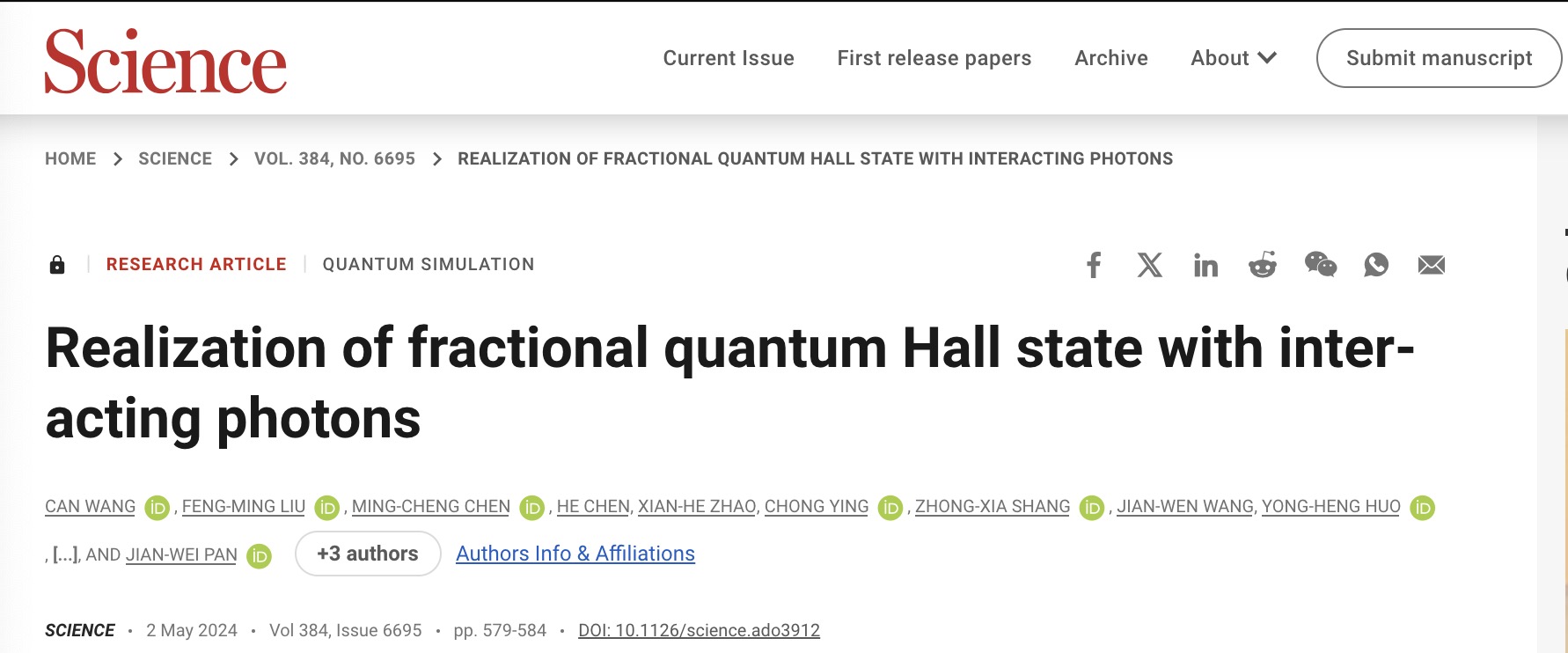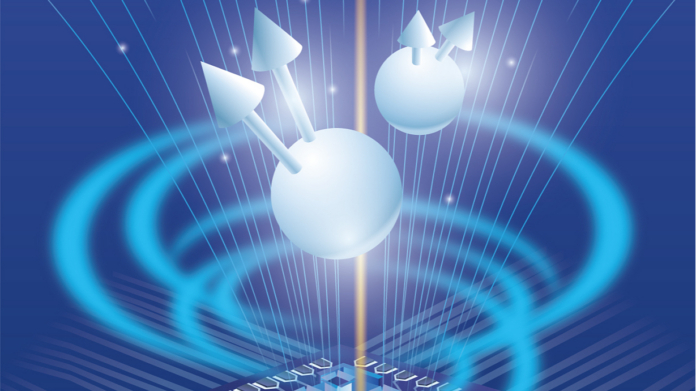BEIJING: A Chinese team has successfully replicated a bizarre quantum phenomenon using photons, instead of electrons, the University of Science and Technology of China (USTC) said on Monday.
The researchers used an independently developed quantum experimental system to simulate the phenomenon, called fractional quantum anomalous Hall state.
This breakthrough in quantum simulation technology is expected to propel advancements in quantum physics research and quantum computing, said Pan Jianwei, a Chinese quantum physicist and academician with the Chinese Academy of Sciences (CAS), at a press conference.
The team from the USTC, led by Pan and Lu Chaoyang, has independently developed and named a new type of superconducting qubit, Plasmonium, in the research. A qubit is a basic unit of information in quantum computing.
The study was published in the journal Science on May 2.
The team’s achievement addressed two crucial challenges in realizing the fractional quantum anomalous Hall effect with photons, providing new means for experimental observation and manipulation of quantum. By developing their own Plasmonium qubit, the research team overcame a key limitation of traditional Transmon qubits. Plasmonium’s higher anharmonicity allows for stronger repulsion between photons. Additionally, they created an artificial magnetic field for the photons using AC coupling. This enables the photons to accumulate Berry phase as they travel around the lattice structure.
Chang Jin, vice president of CAS, said at a press conference that the achievement is expected to have a significant impact on the future development of quantum technology.
“We hope that the development of quantum technology will continue to advance through the efforts of the global scientific community and international cooperation. By transforming the achievements of relevant basic research into key technologies that drive social progress and economic development, quantum technology will become the innovative force and source of new quality productive forces,” Chang said.
“This is a remarkable achievement, both scientifically and technically, and reaching such a goal has been one of the holy grails of quantum simulation for many years in many laboratories worldwide,” said Peter Zoller, winner of the Wolf Prize in Physics and a chair professor at the University of Innsbruck.
Frank Wilczek, a Nobel laureate in physics, praised the study as “a very promising idea” and “a very impressive experiment” that represents “a remarkable step” in quantum information processing.

A screenshot of the study published in the journal Science, May 2, 2024.
Quantum simulation technology
The synthetic, controllable, and more powerful quantum simulation approach, which breaks free from the limitations of natural systems, can be utilized to investigate further mysteries of quantum states and explore the realization of fault-tolerant universal quantum computation, Pan said.
The Hall effect refers to the phenomenon where a voltage is generated perpendicular to the direction of both the current and the magnetic field when a current passes through a material placed in a magnetic field. This effect was discovered by American scientist Edwin Hall in 1879 and has been widely applied in the field of electromagnetic sensing.
The anomalous Hall effect refers to the observation of related effects without the need for an external magnetic field. In 2013, a Chinese research team observed the integer quantum anomalous Hall effect. In 2023, research teams from the United States and China independently observed the fractional quantum anomalous Hall effect.
The conventional approach for studying the quantum Hall effect in experiments involves utilizing the existing structure and properties of specific materials to prepare the quantum Hall state, which requires stringent experimental conditions including extremely low-temperature environments, high purity of two-dimensional materials, and strong magnetic fields.
Traditional methods face challenges in independently manipulating and measuring the microscopic quantum states of the system at single-point positions, limiting their applications in quantum information science.
The artificially constructed quantum system, on the contrary, offers a clear and flexible structure and provide researchers with greater control and manipulation capabilities, making it a new paradigm for studying complex quantum states, Lu said.
This system does not require an external magnetic field. Through high-precision control, it enables comprehensive measurements of the microscopic properties of highly integrated quantum systems. It also allows for further controlled utilization of these properties, Lu added.
This type of technology is known as quantum simulation and is an important component of the second quantum revolution. It is expected to be applied in the near future to simulate a quantum system that is computationally challenging for classical computers, ultimately achieving quantum computational supremacy.




















